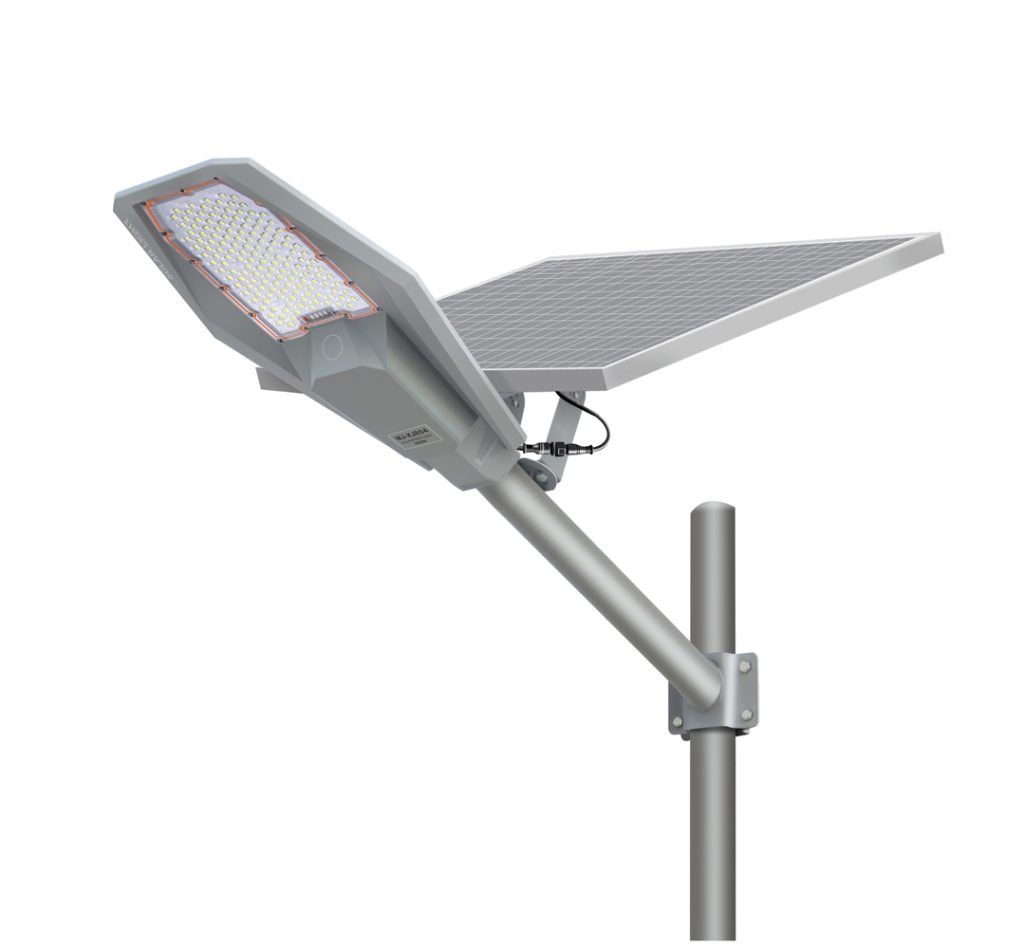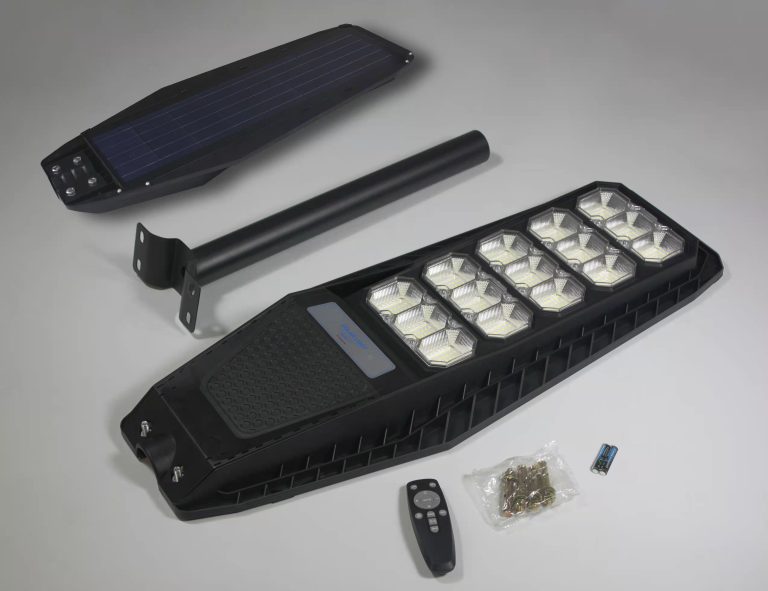According to the physical structure of the entire solar street light, we can divide street lights on the market into three categories: split-type, two-body integrated type, and one-body integrated type. So, which one is the best? When facing these three types of lights, how should we choose? By understanding the characteristics of each type, we can naturally choose the most suitable one according to our needs.
Split-type Solar Street Light

When introducing these three types of lights, we put the split-type first. Why is that? Because split-type solar street lights are the earliest products to emerge. Later, two-body integrated and one-body integrated types were developed based on the optimization and improvement of split-type lights. Therefore, we will introduce them in chronological order.
Advantages of Split-type Lights: Large System
The biggest advantage of split-type lights is that they can be flexibly combined into any system according to user needs, and each component has strong scalability. Therefore, the system can be large or small, and the flexibility is its main advantage. However, such combination is not user-friendly, as the components sent by the manufacturer are independent and scattered, and the assembly and wiring work is increased. Especially when many installation workers are not professionals, the error rate is greatly increased.
However, the leading position of split-type lights in larger systems cannot be shaken by two-body integrated and one-body integrated types. Larger power or longer working hours mean larger power consumption, which requires large-capacity batteries and high-power solar panels to support. Two-body integrated lights, due to the limitations of the lamp’s battery compartment, have limited battery capacity; one-body integrated lights are limited by the power of the solar panel.
Therefore, split-type solar lights are suitable for large power or long working hours systems.
Two-body Integrated Solar Street Light

To address the high cost and installation difficulties of split-type lights, we optimized and proposed the two-body integrated light scheme. The two-body integrated light is a scheme where the battery, controller, and light source are integrated into the lamp, and the solar panel is separate. Of course, the two-body integrated light scheme is designed around lithium batteries, relying on their small size, light weight, and advantages.
Advantages of Two-body Integrated Lights:
1. Easy installation: Since the light source, battery, and controller are pre-connected at the factory, the LED light only has one wire, which is connected to the solar panel. This wire only needs to be connected by the customer at the installation site. The error rate is reduced by 67%, and the customer only needs to distinguish the positive and negative poles.
2. High cost-effectiveness: Compared to split-type schemes, two-body integrated lights have lower material costs and installation labor costs.
3. Multiple power options, wide applicability: With the popularity of two-body integrated lights, various manufacturers have launched their own molds, and the selection has become richer. There are many options for light source power and battery compartment size. Light sources with actual power from 4W to 80W can be found on the market, but the most concentrated are 20-60W systems.
Limitations of Two-body integrated Lights:
1. Limitations in large systems: The battery compartment size is fixed during lamp molding, so it is limited by the size of the lamp. When encountering high-power light sources, long working hours, and rainy days, the battery compartment may not be able to keep up.
2. Restrictions in high-latitude regions: Due to the installation position of lithium batteries in two-body integrated lights, the temperature of the battery may be affected in high-latitude regions, and the system may not work properly.
One-body Integrated Solar Street Light

One-body integrated lights integrate the battery, controller, light source, and solar panel into the lamp. It is more integrated than two-body integrated lights, which brings convenience to transportation and installation, but also has some limitations, especially in areas with relatively weak sunlight.
Advantages of One-body integrated Lights:
1. Easy installation, no wiring required: One-body integrated lights have all the wires pre-connected, so customers do not need to wire, which is a great convenience.
2. Convenient transportation, reduced shipping costs: All components are concentrated into one, packed in a small box, and the transportation volume is reduced, which reduces shipping costs.
Limitations of One-body Integrated Lights:
1. Low charging efficiency: Due to the fixed size of the lamp, the size and power of the solar panel are limited, which affects the charging efficiency.
2. Low illumination efficiency: There are three reasons: ① Limited light source power. One-body integrated lights have limited light source power, which is restricted by the size of the solar panel. ② Limited lamp angle. The lamp angle is fixed, and the light source cannot be adjusted according to needs. ③ Limited arm length. Most one-body integrated lights are directly fixed to the lamp post, and the arm length is fixed, which affects the illumination range.
3. Sensing function is limited: One-body integrated lights often configure human or microwave sensing to reduce power consumption. However, due to cost constraints, the sensitivity and detection range of the sensing head are not ideal, and the light source may not enter high-brightness mode until the vehicle or pedestrian is close to the lamp.
4. High after-sales cost: Once the lamp is damaged, it must be disassembled as a whole, and it is not possible to selectively disassemble certain components, so the after-sales cost is high.
5. High selling price: Although the highly integrated design reduces some material costs, the selling price of one-body integrated lights on the market is not low, and may even be higher than two-body integrated lights.
Application of One-body Integrated Lights:
Although one-body integrated lights have some limitations, they are still a good solution if the application area and site are suitable.
1. Suitable regions: Areas with very good sunlight, such as low-latitude regions.
2. Suitable places: Courtyards, small paths, parks, and small residential areas where pedestrians are the main service objects. These small roads have low illumination requirements, and one-body integrated lights can meet these demands well.
Zhongshan Melinz One lighting Co.,Ltd had been manufacturing various types of solar street lights to meet customers’ different applications needed. should you still not sure which type of solar streer lights suit your applications best, please feel free to contact us, our professional team would provide best workable solutions for you!




